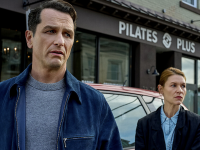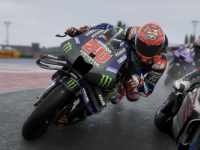
Thor returns to cinemas with the third iteration in the stand-alone series (Thor being a key member of The Avengers series), but with lukewarm response to the previous film, The Dark World, will the third time be the charm for Thor: Ragnarok?
Our story begins with our eponymous hero chained up in a cage speaking to his new friend – a skeleton, who is very much dead – explaining a brief history of how he came to be in said cage. He then falls from his cage and following a disarmingly humorous exchange and our first fight scene of the film with Surtur, a fire demon bent on destroying Asgard, we’re launched into the film proper. The remainder of the film sees Thor’s previously imprisoned sister, Hela (played amazingly by Cate Blanchett) return to conquer Asgard as Thor tries to return to stop her.
One key point noting about the aforementioned exchange with Surtur, and the ensuing fight set in the depths of a flaming Hell to Led Zeppelin’s Immigrant Song is that this film immediately manages something the previous Thor films have failed to do; it makes Thor relatable and even likeable.
 Across the Thor films, Chris Hemsworth has done an excellent job of being a hugely powerful God of Thunder, all rippling muscles and with his lack of knowledge of Earth’s ways, a bit of a comic foil. However, he has never fully come across as human (yes, I realise we’re talking about an Asgardian God, but those of us watching are not). As the film rolls on, it takes a less stoic and serious approach as found in the previous Thor films, with comical exchanges with The Hulk/Bruce Banner (Mark Ruffalo), Valkyrie (series newcomer Tessa Thompson) and as ever, Loki (Tom Hiddleston). Granted there are moments when music choices or humour threaten to derail the tension, and the direction treads a fine line, but it never quite crosses it.
Across the Thor films, Chris Hemsworth has done an excellent job of being a hugely powerful God of Thunder, all rippling muscles and with his lack of knowledge of Earth’s ways, a bit of a comic foil. However, he has never fully come across as human (yes, I realise we’re talking about an Asgardian God, but those of us watching are not). As the film rolls on, it takes a less stoic and serious approach as found in the previous Thor films, with comical exchanges with The Hulk/Bruce Banner (Mark Ruffalo), Valkyrie (series newcomer Tessa Thompson) and as ever, Loki (Tom Hiddleston). Granted there are moments when music choices or humour threaten to derail the tension, and the direction treads a fine line, but it never quite crosses it.
One relationship that has disappeared completely however, is that of Thor and Jane Foster (Natalie Portman). However, it doesn’t feel like we’re missing out. As talented as Portman is, it’s hard to do good work with a character whose entire purpose is to be a romantic interest for Thor, and in the case of the The Dark World, pine for him. With Portman being ‘done’ with Marvel, the relationship is settled off-screen and, whilst not directly replaced, leaves the door open to Thor and Valkyrie, a character with more backstory and connection to Thor.
Being a superhero film, the fight scenes themselves are, of course, spectacular. They are well directed and place you in the spectator’s view, as opposed to the more modern trend of putting you in the action with jolting camera angles and lights which may make the fight more ‘real’, but detract from actually seeing punches. The fight scene that everyone came to see of course, was Thor going toe-to-toe with The Hulk (a reveal that was spoiled in the trailer and could’ve been much better if saved, but oh well). The fight shows Thor standing his own against one of the strongest characters in Marvel.
of course, spectacular. They are well directed and place you in the spectator’s view, as opposed to the more modern trend of putting you in the action with jolting camera angles and lights which may make the fight more ‘real’, but detract from actually seeing punches. The fight scene that everyone came to see of course, was Thor going toe-to-toe with The Hulk (a reveal that was spoiled in the trailer and could’ve been much better if saved, but oh well). The fight shows Thor standing his own against one of the strongest characters in Marvel.
One point that is worthy of serious note is the entire aesthetic design of the film. From the construction and realisation of Asgard as a truly God-like realm, to the rugged and metallic Sakaar, the set design feels believable (even though it’s set in space) and sets the scene perfectly for the interactions within. As for costuming and character design – we’ve grown to expect Thor’s tough yet tight (you know, for muscles) “armour”, as well as Loki’s flowing sinister robes, but the real star has got to be Hela’s costuming. Although it has been done totally in motion-capture, you wouldn’t believe it. It’s a cosplayer’s dream. The leather-like armour flows down from the foreboding headdress making for a truly threatening female villain, something lacking in the Marvel Cinematic Universe – until now.
Whilst crowd favourites of the film have got to be Korg and Miek (I won’t go into more detail, but they’re easily a highlight of the film and deserve their own spin-off), the best performance comfortably goes to Cate Blanchett. Whilst Hiddleston and Hemsworth et al have had years and multiple movies to perfect their heroes and have decidedly made the effort to make them more human since the original film, Blanchett has quietly stormed into the MCU and made her character unforgettable without falling into a single female comic character trope, whilst sub-textually holding a mirror to the patriarchy overall.
Overall, the film is a winner. It’s what a superhero film should look like: big, exciting, bright and at times funny. If you’re not going in the direction of Logan, our farewell trip with Wolverine, this is a precise balance on what it should look like.

Author: Steve, Southgate Store





